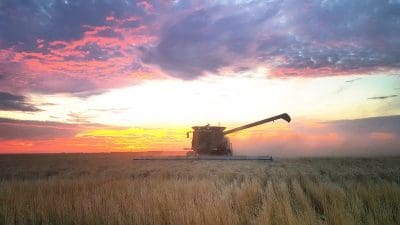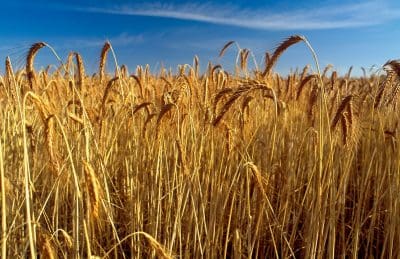COONAMBLE and Walgett, two neighbouring regions in north-west NSW, share the legacy of the remarkable harvest of 2016.
Timely planting rains and a long, mild spring saw both shires produce wheat crops estimated to total close to two million tonnes (Mt).
That put pressure on growers, harvesting contractors and carriers, as they deployed resources to harvest tall and bulky cereals concurrently with a large and tricky chickpea crop.
“The price of harvest contractors doubled, and there was a lot of pressure on trucks,” Coonamble farmer Bill Burnheim said.
Many contractors, who in their seasonal north-to-south swing had been delayed up north, had commitments to clients further south and needed to pull up stumps and get going to the next job without further delay.
Header fire control in crops such as chickpea included expensive but necessary downtime every hour to blow off crop-residue in searing heat.
Every commercial storage filled fast as harvest poured in, and resulted in record or near-record intakes at north-west NSW GrainCorp storages.
On January 11, GrainCorp announced its Coonamble site topped the 2016-17 harvest, with close to 400,000 tonnes of grain received, while the Walgett site received nearly 300,000t.
Other records included Cryon with 130,000t and Burren Junction and Gilgandra with 160,000t each. Trucks were at a premium and storages, once full, were shut to further deliveries. Temporary pads, or other spare ground, received much of the overflow.
Even with a $21 million pre-harvest GrainCorp investment in improvements, the size of the 2016 grain harvest caught everyone by surprise.
“There’s more grain held on farm than there’s ever been,” long-time Walgett district farmer Michael O’Brien said.

End of harvest 2016 at Morvenvale, Ricardo photo credit
Plenty of wheat harvested in 2016 in Walgett and northern Coonamble districts has made APH specifications, helped by an enforced long fallow thanks to drought which severely limited winter crop plantings in 2013, 2014 and 2015.
This helped minimise yield losses from diseases like crown rot, and aided build-up of nutrients through mineralisation in the soil.
Coonamble district wheat yields average more than five t/hectare, compared with long-term average of 2.2t/ha, and grades achieved were mostly H2 and APW.
The only downside to wheat harvested in 2016 was the price.
Barley, chickpeas add to volume
Significant quantities of feed barley from the Coonamble and Walgett region have already been sold into feedlots in northern NSW and southern Queensland.
Mr O’Brien estimated at least 50 per cent of the districts’ chickpeas have been sold, but plenty of barley, as well as the region’s number-one pulse, was still being held on farm awaiting pick-up from buyers.
Coonamble’s Mr Burnheim said GrainCorp local sites did not receive chickpeas, but Agrigrain’s Coonamble site did, which helped ease on-farm storage pressures for the massive crop.
How NSW wheat zones ranked
Lachstock Consulting’s production estimate across the entire region of north-west NSW cited the zone’s wheat crop size in line with the 2010 and 2008 crops of around 2.2Mt, ranking the north-west top in 2016 compared with its 5-year average rank of number 4 (see table 1).
In 2016, that equated to around 23pc of the overall NSW state wheat crop of 9.5Mt.
The NSW state record wheat crop was from the 2010 harvest amounting to 10.5Mt. The NSW 10-year average wheat crop was 6.4Mt, when you exclude 2010 as the highest production year, and 2007 as the lowest at 2.5Mt.
Table 1: NSW wheat production zone rankings
| Rank 2016/17 | Rank 5 yr average | |
| Northwest | 1 | 4 |
| Murrumbidgee | 2 | 2 |
| Northern | 5 | 3 |
| Central west | 3 | 1 |
| Murray | 4 | 5 |
Source : Lachstock Consulting




HAVE YOUR SAY